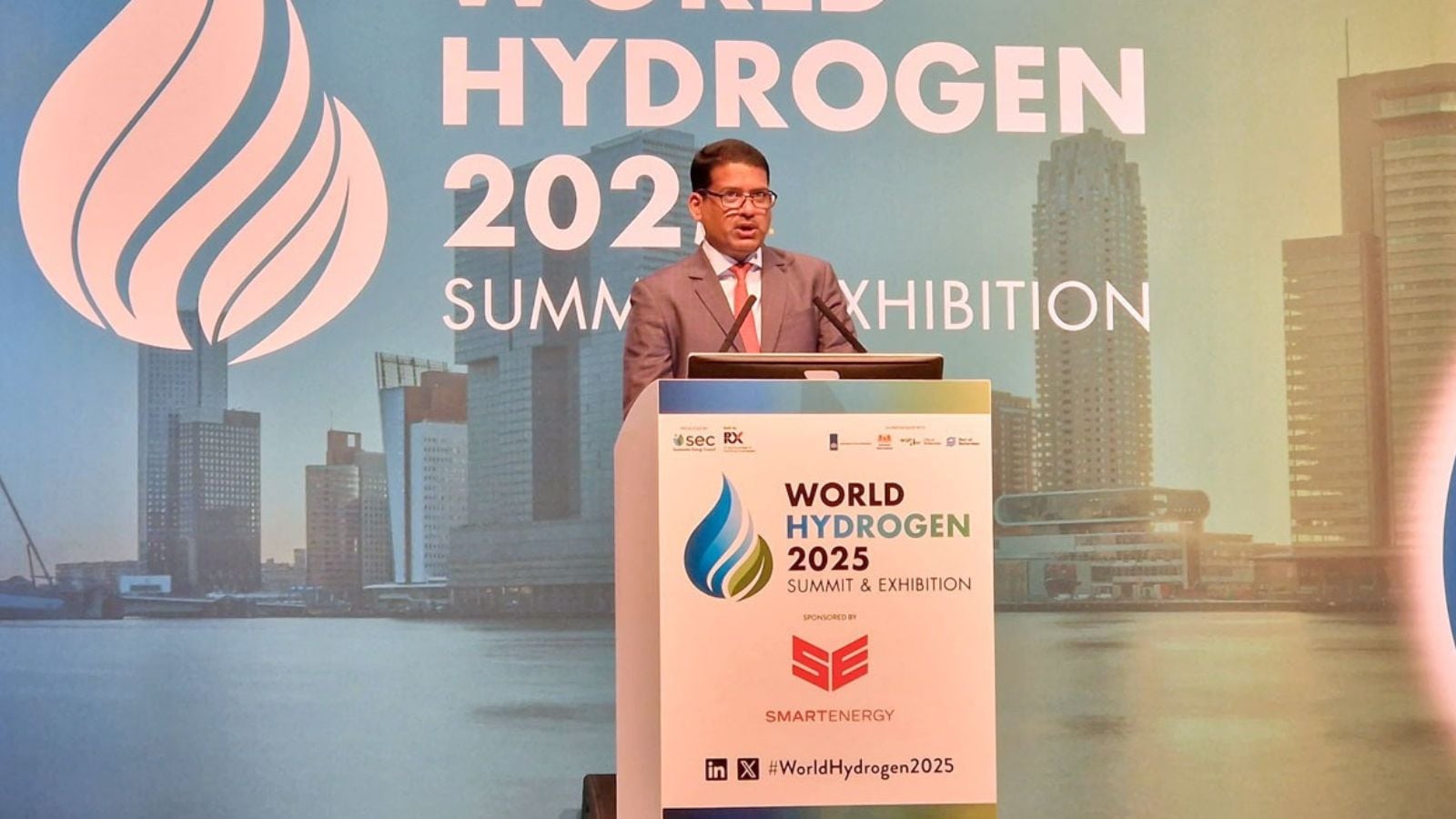Stakeholders in India’s nascent green hydrogen sector remain bullish that the alternate fuel “is going to be big”, but weak export demand — driven by geopolitical instability and policy reversals in key markets — is slowing down the pace of expansion.
At an industry event on Thursday, Ministry of New and Renewable Energy (MNRE) Secretary, Santosh Kumar Sarangi, said, “One key factor, from an entrepreneur’s perspective, is market visibility. That market — due to a variety of reasons such as geopolitical tensions and policy backtracking by some governments, including the US where the IRA (Inflation Reduction Act) is stalled — has created some skepticism about whether this transition will move forward.”
The IRA, widely seen as the most significant net-zero carbon emissions intervention in the US, is under threat from President Donald Trump’s proposed “Big Beautiful Bill”, currently up for Senate consideration. It includes production tax credits meant to incentivize the deployment of low-carbon hydrogen.
“But I believe green hydrogen has a strong future and is going to be big. India will play an instrumental role in this transition, alongside many other countries devoted to this,” he added.
The MNRE Secretary said India is in discussions with Europe, specifically the ports of Rotterdam and Antwerp, to ensure that green hydrogen and its derivatives exported to these countries are transported smoothly. Reduction of import duties on India’s green hydrogen exports is also a part of ongoing free trade agreement (FTA) negotiations with Europe, he said.
Sluggish offtake slows expansion of green hydrogen sector
ReNew, a major renewables player in India, is developing a green ammonia project in Odisha. However, weak export demand remains a major hurdle for offtake.
“At this point, export markets are very weak, with little movement globally. That said, there is some progress on the shipping front, with the International Maritime Organization urging shipping companies to start using some degree of clean fuels, about 5 per cent. Sustainable aviation fuel may also take off soon. So there is hope for the future — but for now, progress remains slow,” its chief executive officer Sumant Sinha told The Indian Express.
Story continues below this ad
On demand from the EU, Sinha said, “The issue is that the EU and its companies aren’t floating major tenders. The lone Hintco tender failed due to poor design from a developer’s perspective, drawing almost no bids. Since then, nothing significant has emerged, and with ongoing geopolitical stuff, attention has shifted elsewhere.”
Hintco is the implementing agency of the Hamburg-headquartered H2Global Foundation, which was set up to support the large-scale ramp-up and industrial use of clean hydrogen and other low-emissions fuels.
Building domestic demand in focus
With export demand still weak, the government is focused on building domestic demand. “We’ve seen strong interest in green hydrogen — our tender for around 8 lakh tonnes was fully bid out. Similarly, for offtake arrangements, we’re working with the Ministry of Fertilizers and the fertilizer industry. SECI (Solar Energy Corporation of India Ltd) is currently conducting a tender for about 7 lakh tonnes to support this,” Sarangi said.
“As far as the Government of India is concerned, several measures are underway to ensure offtake. Pilot projects are also being implemented across sectors like transportation, shipping, and steel. We’re currently funding hydrogen fuel cell buses in five locations, including Ladakh, to test their viability in real-world conditions,” he added.
Story continues below this ad
Sinha argued that domestic mandates may be necessary to replace grey hydrogen — produced from fossil fuels — with green hydrogen. For instance, the fertiliser industry could be required to source more green ammonia from domestic producers.
Green hydrogen, produced by powering electrolysers with renewable energy, is a key feedstock for green ammonia, made by combining hydrogen with nitrogen. Green ammonia has applications as a low-carbon fertiliser and as a fuel for shipping.
Green hydrogen not yet cost competitive
“Commercially, it’s not viable yet because green hydrogen is still more expensive than grey hydrogen. So, no one is going to buy it voluntarily. It’s similar to where renewable energy was 15 years ago — back then, it wasn’t commercially viable either. Today, it is. Green hydrogen is at that early stage now,” Sinha said.
A new report by the Confederation of Indian Industry (CII), Bain & Company, and RMI released on Thursday said, “The slowed momentum primarily stems from the current high production costs along with nascent enabling infrastructure and high financing costs. Current production costs — $4-$5 per kg of green hydrogen vs. $2.3-$2.5 per kg of grey hydrogen typically (some industries may procure at higher costs) — are not yet competitive.”
Story continues below this ad
In 2023, the Central government launched the National Green Hydrogen Mission, setting a target of 5 million metric tonnes (MMT) of green hydrogen production capacity by 2030, backed by an outlay of Rs 19,744 crore. Under the mission, the Strategic Interventions for Green Hydrogen Transition (SIGHT) programme aims to support both green hydrogen production and electrolyser manufacturing.
In April, MNRE also launched a scheme to measure, monitor, report, verify on-site, and certify green hydrogen based on a standard introduced by the ministry in 2023.
The CII report outlines five immediate demand-side strategies to accelerate green hydrogen adoption. It recommends blending small amounts of green hydrogen into existing grey hydrogen or piped natural gas supplies for high-volume sectors such as refineries, fertilisers, and city gas networks, while factoring in technical feasibility. It suggests encouraging substitution in niche industries such as glass, ceramics, and chemicals where switching is cost-neutral. Public procurement, especially for green steel, can also help scale domestic demand.

